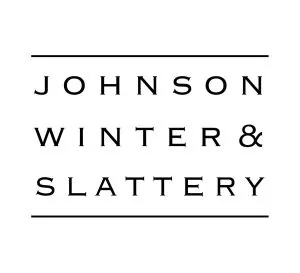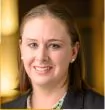The Administrative Appeals Tribunal's (AAT) recent decision in Royal Wins Pty Ltd and Innovation and Science Australia (ISA) [2020] AATA 4320 reinforces that it is important taxpayers appropriately document a hypothesis prior to commencing research and development (R&D) activities. The hypothesis must involve a degree of uncertainty that is formulated for the purposes of being validated or invalidated through the conduct of experiments. This case highlights that documentation for R&D needs to be contemporaneous and should follow a systematic progression of work in order to satisfy the legislative criteria. It also shows the importance of obtaining relevant expert evidence. If the AAT is only presented with evidence from one expert, it is more likely to accept that unopposed evidence.
The case considered the taxpayer's entitlement to have certain activities registered as core or supporting R&D activities for the purposes of the Income Tax Assessment Act 1997 (Cth) (ITAA). Deputy President Molloy found in favour of ISA on the basis that due to the lack of adequate documentation, he was unable to determine what work was done, when it was done, that Royal Wins had started with a hypothesis or that it had undertaken a systematic progression of work based on the principles of established science.
Background
The R&D Tax Incentive is jointly administered by ISA and the Australian Taxation Office (ATO). The taxpayer (Royal Wins) was a software developer who operated a gaming platform for skill-based gaming applications that facilitate betting. It had sought to have certain activities registered by ISA in the 2016 and 2017 registration years as core or supporting R&D activities. Registration with ISA was necessary in order for the taxpayer to be eligible for the R&D Tax Incentive. ISA had originally registered the taxpayer's activities that were applied for, however, in March 2018 the ATO referred the registration to ISA for an Activity and Internal Review. Following a review, ISA determined that the activities registered were not core or supporting R&D activities within the meaning of the ITAA. In particular, ISA held the taxpayer had applied existing mathematical knowledge and models to attain its outcomes and did not demonstrate that:
- the activities were experimental
- the outcome of the activities could not be known or determined in advance on the basis of current knowledge, information or experience
- a technical knowledge gap existed that could only be resolved by experimentation as part of a systematic progression of work
- a systematic progression of work had been undertaken, based on principles of established science, proceeding from hypothesis to experiment, observation and evaluation and leading to logical outcomes
- that it held relevant hypotheses
- that the activities were carried out for the purposes of generating new knowledge.
The taxpayer sought internal review of the decision, which was later affirmed by ISA. The taxpayer then appealed that internal review decision to the AAT. On appeal the taxpayer agreed one of the core R&D activities was a supporting activity. Accordingly, issue for the AAT was whether any of the remaining core activities for which the taxpayer had sought registration were core R&D activities within the meaning of s 355-25 of the ITAA.
Importance of expert evidence and documentation
The taxpayer did not obtain any expert evidence and sought to rely only on the evidence of Lukie Ali, who represented the taxpayer before the AAT. ISA obtained a report from an expert who was a computer scientist with expertise in game design.
The AAT noted the taxpayer had not been able to produce adequate documentation to support its position. ISA's expert had concluded at [35] that "[t]he lack of documentation is inconsistent with best practices in the industry and research alike, as this may slow down software development and complicate its maintenance."
The AAT accepted ISA's expert evidence and found the taxpayer's evidence was insufficient to satisfy the legislation. It noted at [40] that "Associate Professor Berkovsky was of the opinion that the documentation exhibited a lack of structure, and an absence of ordered recording of activities and results. I cannot be satisfied on the evidence what work was undertaken in performance of the claimed activities or when it was carried out. It is not just a matter of when activities were undertaken, but on the documentation available, I cannot be satisfied that the [taxpayer's] activities involved a systematic progression of work such as is required under the legislation."
By not obtaining any relevant expert evidence, the taxpayer put itself in a much weaker position to win the case as the AAT was only assisted by ISA's expert. The lack of relevant documentation also meant the AAT was unable to accept the taxpayer was entitled to have its activities registered as core or supporting R&D activities.
Taxpayers must establish a hypothesis prior to experimentation
ISA submitted that the T-Documents contained a number of file names including the words "hypothesis", "experiments" and "conclusions" which appeared to have been created after the experiments were conducted.
The AAT stated at [44] that "[a]n hypothesis is a proposition to be tested by experiment. It is not merely a statement of objective of a particular common project. Necessarily, the hypothesis must be identified before conducting the experiment (although the hypothesis may be refined to take into account the results of the experiment). An ex-post facto attempt to construct or discover an "hypothesis" with the benefit of hindsight after the work has been carried out will not satisfy the statutory criteria."
The AAT accepted ISA's submission at [47] that "there was no relevant contemporaneous documentation to establish that any relevant hypothesis had been developed or tested. To the extent that any hypotheses are identified, they are properly characterized as "vague, generalised descriptions" in the nature of a commercial objective as opposed to a proposition involving a degree of uncertainty that is formulated for the purpose of being either validated or invalidated by the conduct of an experiment."
For these reasons the AAT found in favour of ISA and affirmed the decision under review.
The content of this article is intended to provide a general guide to the subject matter. Specialist advice should be sought about your specific circumstances.


